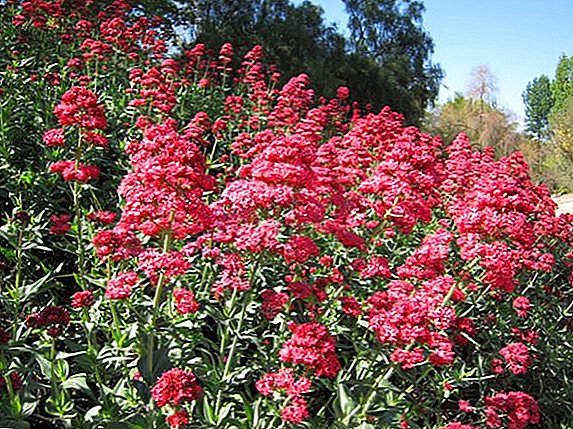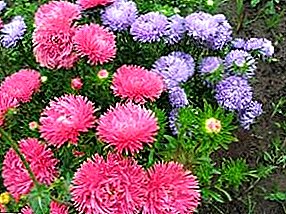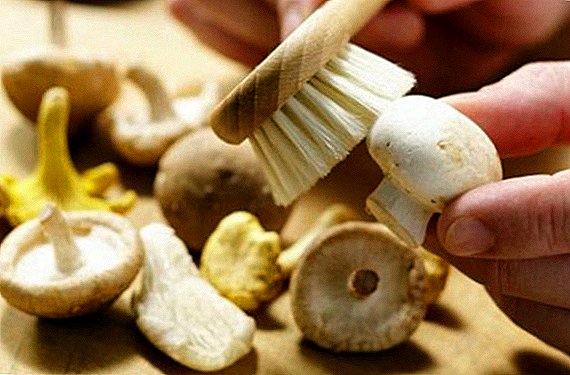
Oxyl or Oxalis is a plant from the Kisles family. This name arose from the fact that when chewing leaves give sour taste, because they are saturated with oxalic acid and vitamins.
Another name familiar to many flower growers - “Butterfly” or “Madame Butterfly”, appeared because of the characteristic shape of the leaves, similar to butterfly wings.
In European countries, oxalis was named "Clover of happiness" and there they believe that it can bring good luck to the house. But this will happen if the flower changes its owner on the last day of the year.
In natural conditions occurs around 800 species oxalis They grow in tropical areas on all continents, Southern Europe, South America, and Africa.
In the photo you can see several varieties of homemade tartfish:





Home care
Caring for tartweed at home is not complicated at all, and therefore even novice growers may be engaged in growing it.
The video describes in detail how to care for acidity at home:
Care after purchase
Ideally, it is best to purchase oxalis as tubers or processes, which are subsequently planted in a pot on their own. If this is not possible, then the choice in the store will have to come with all the care. Very often they are just poured, because of what the purchase dies after some time.
It is necessary to acquire a plant from which the leaves look fresh, healthy, and have not sagged. The earth should not be wet, with an unpleasant smell.
How to care for tart? In an apartment or office, oxalis is placed on a source of diffused light, and gradually they are accustomed to bright light. In 2-3 weeks it is transplanted into a new pot, carefully peeling off the old substrate from the tubers.
Pruning
 For the formation of a lush crown and a long flowering oxalis, it is necessary to completely cut off all the old leaves. However, this must be done in the fall or spring, depending on whether it is possible to create the right conditions for a state of rest.
For the formation of a lush crown and a long flowering oxalis, it is necessary to completely cut off all the old leaves. However, this must be done in the fall or spring, depending on whether it is possible to create the right conditions for a state of rest.
If in winter the flower will be in the room at + 12-14 degrees, then it is best to cut in the fall, right before the start of the rest. If the air is warm, then in this case, pruned leaves are made after the winter.
REFERENCE!If the shoots are cut in the fall and put oxalis in a warm room, he will immediately grow again and release new young leaves.
Watering
In spring and summer, when there is growth and flowering, watering is abundant, as soon as the top layer of the earth dries out. Excessive watering is harmful. for the tuberous system - to prevent stagnant water in the ground can not.
In autumn and winter, when the flower is in a state of rest, it is rarely watered, however, preventing the earth coma from completely drying out. As soon as the first young shoots appear, the volume of water gradually returns to normal.
Landing
For planting oxalis home is used universal soil for flowers, which can be purchased at the store.
However, it will be better to do nutritional mixture independently, mixing 2 measures of deciduous humus, 2 measures of garden soil, and 1 measure of sand and high-moor peat. Or you can take 2 measures of sod land, and 1 measure of leaf soil and sand.
 On the garden plot oxalis can be planted next to trees and shrubs, as part of compositions in flowerbeds. Best used frost resistant varieties - they do not have to dig in the winter time from the ground for wintering.
On the garden plot oxalis can be planted next to trees and shrubs, as part of compositions in flowerbeds. Best used frost resistant varieties - they do not have to dig in the winter time from the ground for wintering.
Planting is carried out in a wide shallow (up to 10 cm) pits, in which they place the tubers, sprinkled with earth and watered.
Transfer
Transplant is carried out after winter. Young oxalis must be replanted Every year, adult - once in 2-3 years. The pot is chosen in such a way that it is 2-3 cm wider than the previous one.
It is best to purchase not a round container, but a rectangular one - in it the tubers from which the root system is formed will be placed in a more natural way. To make the bush look more lush, you can plant it in one pot at once. several tubers.
IMPORTANT! A thick layer of expanded clay drainage or broken brick chips is laid on the bottom.
Growing from seed at home
Seeds are purchased in a specialty store, or collected independently after flowering.
For planting is best to use a mixture of perlite and wet peat. The seeds are small, and they are simply placed on the surface of the ground, not falling asleep from above. Ground gently sprayed from the sprayer. The container must be covered with polyethylene to create the effect of a greenhouse and placed under indirect sunlight.
In the first year after planting, the main growth goes to the tuberous system, only small sockets are formed above the ground. In the second year, oxalis begins to actively produce shoots.
Breeding
 Depending on the type of flower, it can be propagated cuttings or tubers.
Depending on the type of flower, it can be propagated cuttings or tubers.
Tubers obtained by transplanting an adult plant, gently separating young nodules from adults. After that, they are planted in 5-10 pieces in one pot, slightly falling asleep with the substrate.
Before the formation of the roots of the container, it is necessary to maintain in conditions of + 5-10 degrees, watering is not abundant. The cycle of full development with this method takes from 1 to 1.5 months.
You can also propagate with shoots. They are cut off from adult plants, and then placed in a glass with water or wet sand.
The process of formation of the roots takes 2-2.5 weeks. Then they are planted in disposable cups with soil, and after growing up they are transferred to large pots.
Temperature
It prefers cool conditions, but it will be quite normal to grow at high rates. In summer, the optimum temperature is in the range of + 20-25 degrees, in winter - not less than +7 degrees.
In winter, the flower has a well defined rest period, so it’s best for this period to move it to a room with air + 12-15 degrees. With the advent of new shoots, it is returned to a warm place.
Any time of the year it is important beware of drafts and sudden changes in temperature.
Lighting
The flower is placed indoors with bright but diffused light. Eastern or western windows are best for this, but you can put a flower on the south windows, covering it with paper or cloth from 11 am to 5 pm.
For some time the plant may be in the penumbra, but a long stay will negatively affect the shape and color of the leaves. Hit under the direct rays of the sun causes burns.
Benefit and harm
 From roomy room can do seasoning, which is added to soups, vegetables, cereals or meat.
From roomy room can do seasoning, which is added to soups, vegetables, cereals or meat.
In folk medicine, all parts of horned fern are used - flowers, flower stalks and leaves. They are collected during the spring or early summer, and then dried at a temperature of + 40-50 degrees.
Cooked decoctions are prescribed for the treatment of scurvy, diseases of the stomach and liver. Serves great antiseptic. Juice can be used in the treatment of scabies.
At the same time, intake in large quantities is harmful - accumulated oxalic acid can negatively affect the kidneys and urinary system. Yet it can not be used for people with diseases of the joints.
Diseases and pests
When growing in a room, sometimes flower growers wonder whydo the leaves of oxalis fade? First of all, it is necessary to check the condition of the soil; if it is dry, water it.
If the leaves of okalis begin to descend and wither in the fall, this may be the preparation of the flower for a rest period. All shoots can be cut, and the pot moved to a place with a temperature of + 12-14 degrees. After winter, they will grow back.
There may also be a situation when in the spring oxalis does not grow and it does not appear new shoots. The reasons for this may be several. If a transfer was made, it is advisable to make sure that the selected container is not too large.
Ideally, it should be only 2-3 cm more. In addition, the ground should not be too wet. If the transplant was not made, then the tubers may have filled the entire container, and they are cramped, or the soil is depleted and needs to be replaced.
Important! Oxalis is resistant to pests, but in case of violation of the conditions of care on it may appear spider mites, aphid or scale.
When infectedspider mite whitish webs appear. To combat it, you need to wash the plant with a sponge and soapy water.
At defeatshield Brown bulges will appear on the leaves, which are the shells of these insects. To combat them, it is necessary to mechanically clean them with a soft brush with a soap solution, and then, if necessary, treat them with chemicals.
When appearing aphids small white insects appear on the shoots, which leave behind a white sticky plaque. Fight against them is made by means of insecticides.
Winter care
 Caring for tart winter has features. In winter, the plant comes time to rest. If it is grown at home in a pot, then it is necessary to cut off all the shoots, and move it to a cool place with a temperature of + 12-15 degrees.
Caring for tart winter has features. In winter, the plant comes time to rest. If it is grown at home in a pot, then it is necessary to cut off all the shoots, and move it to a cool place with a temperature of + 12-15 degrees.
When grown in the garden, in the fall all the tubers are dug up, washed and after drying are stored in a cool room. You can immediately separate the tubers-kids from adults. In the spring, when the earth is already warm enough, they are planted back on a flower bed.
Oxyl or oxalis is a perennial plant that many housewives know as "butterfly". It requires rich diffused light and regular watering. Reproduction occurs by seed or tubers. In winter, there is a well defined rest period, during which the shoots must be cut and moved to a cool place.












